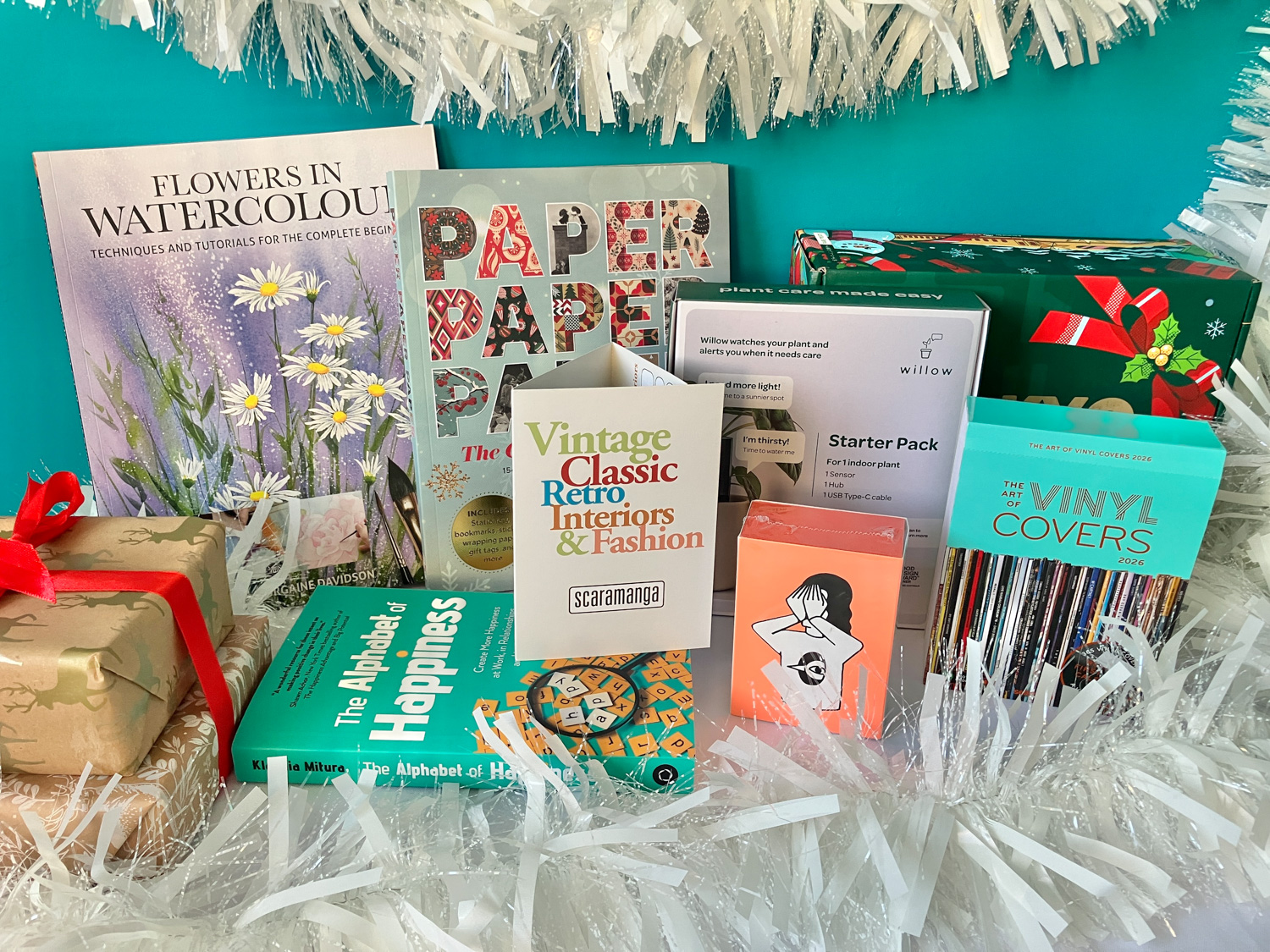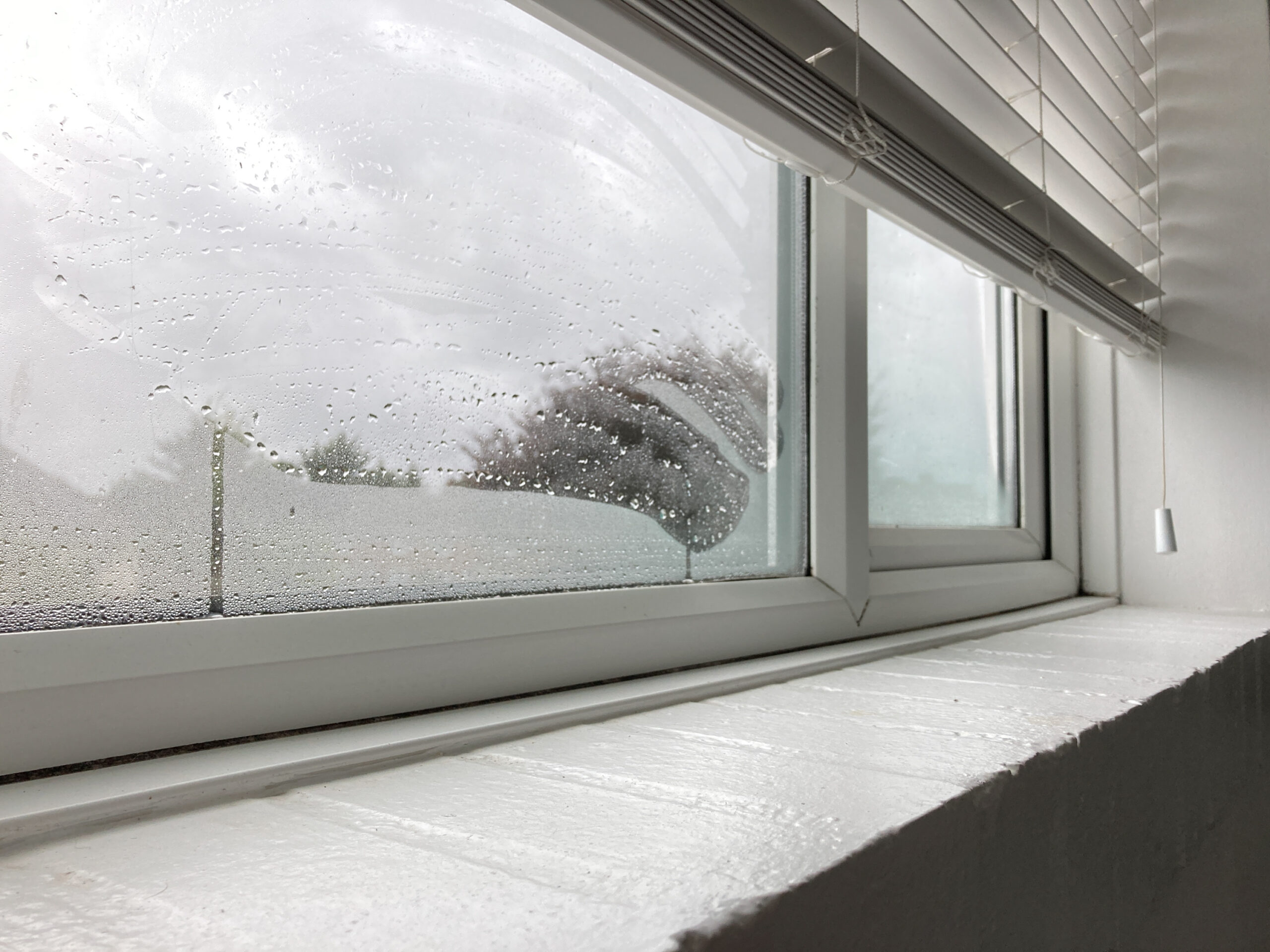I’ve been doing the #FoodSavvy challenge throughout February and it’s been an eye-opener. Firstly because I couldn’t quite believe just how much food and plastic I had been wasting before the challenge and, secondly, because I was surprised at how easy it was to change my habits to create a more food savvy kitchen. Here’s what I discovered…
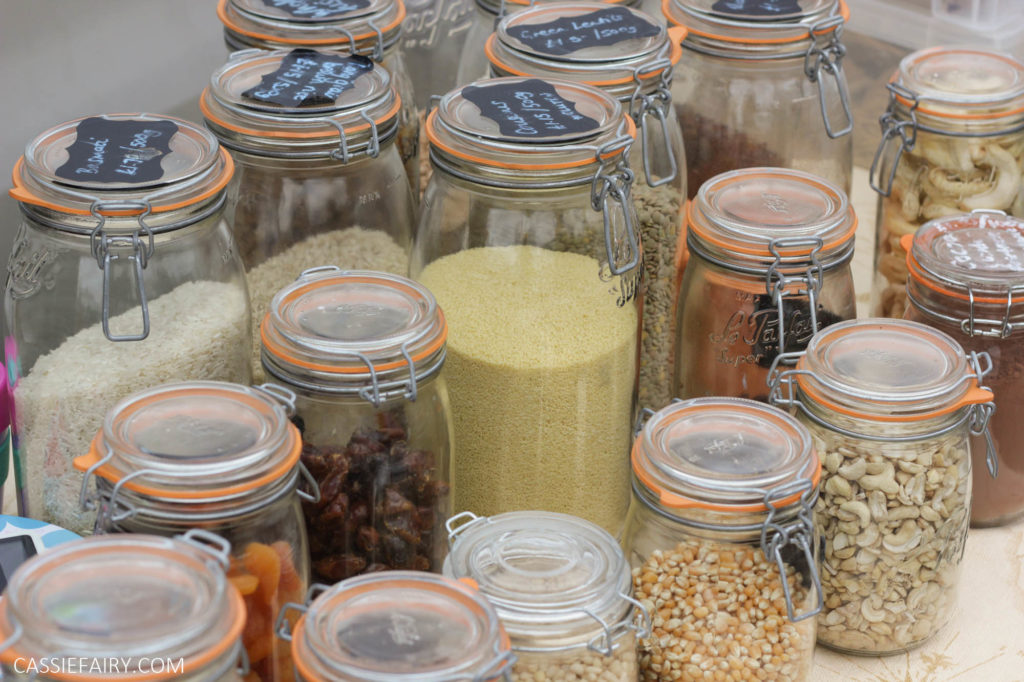
WASTING POTENTIALLY EDIBLE FOOD
By measuring my food waste during the first week of the #FoodSavvy challenge, I found out that the main reason that we waste food in our household is because we don’t plan our meals. Therefore, we were buying a regular list of fresh ingredients every week but don’t always get round to eating the food before it went off. With ‘delicate’ items like mushrooms, avocados, salad, bread etc I kind of expected it – but we were even wasting ingredients that had a longer shelf-life, like potatoes, carrots and onions.

So, I found that when I was reaching for an ingredient I needed, I would find that it was already moudly and couldn’t be used, so I had to replace it before cooking the recipe I planned. By the way, after doing the first week of the challenge I’ve decided that I want to compost my food waste rather than binning it, so I got a kitchen caddy from the Eco-Range by Addis, which is made from 100% recycled household plastics.
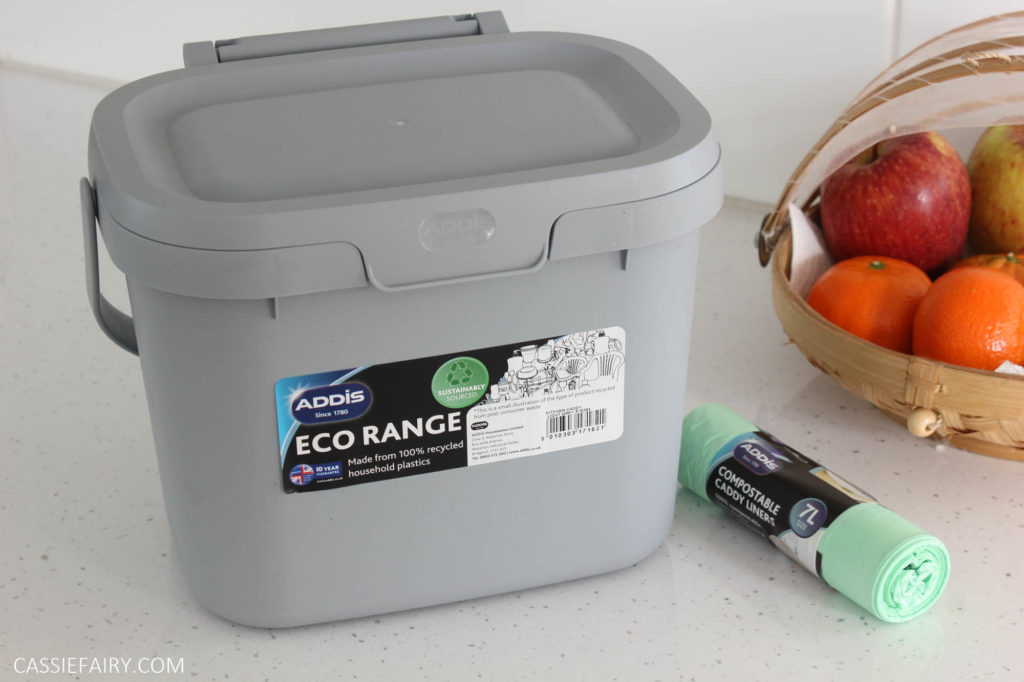
The second reason for our food waste was cooking too much and then not eating the leftovers. I’ve never been great at estimating portion sizes so we have leftovers of rice, pasta and potatoes almost every meal. While makes sense to batch cook to save time (and to save money and food waste too, if you have a glut of fresh veggies etc that need using up) I’ve never been sure about what can and can’t be frozen and reheated.
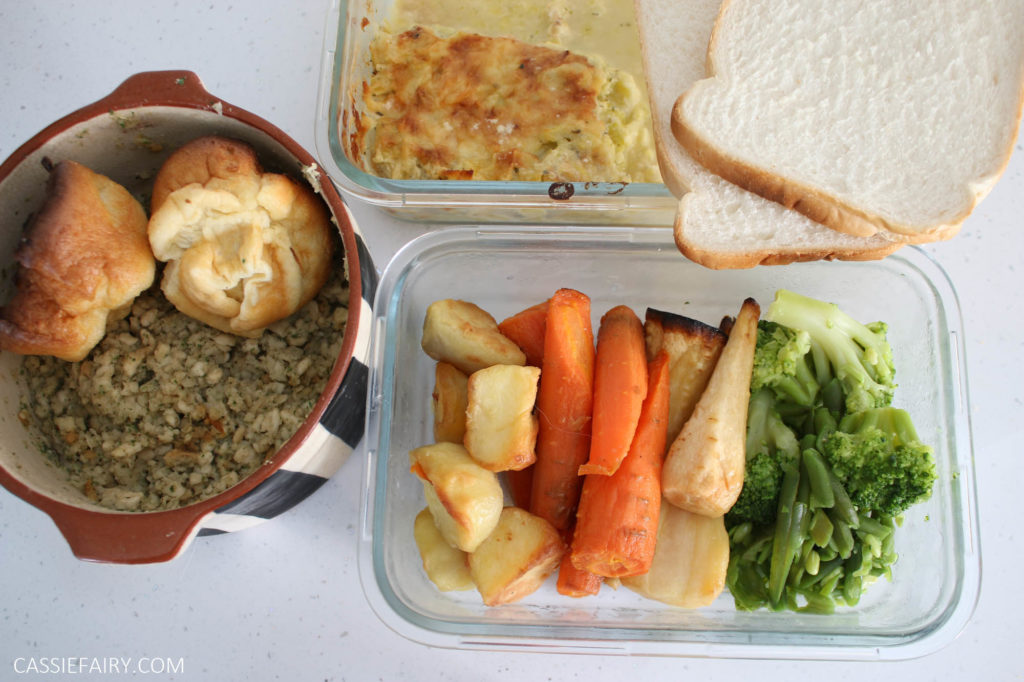
I decided to get clued-up by using the Portion Planner on the Love Food Hate Waste website and I read these Savvy Tips to find out how to correctly store ingredients, freeze leftovers and plan meals. Twice this month we’ve used up our Sunday roast leftovers by making one of my favourite recipes bubble and squeak patties. I now intentionally cook up too much veg so that I can use the leftovers for this meal the following day.
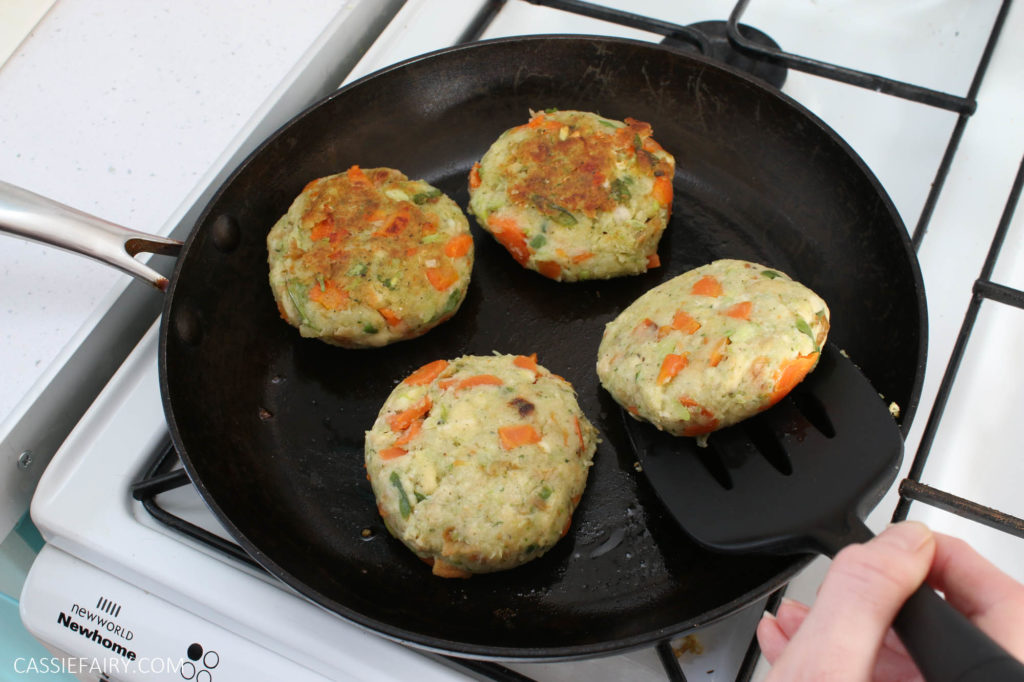
SINGLE-USE PLASTIC WASTE
I’ve never before measured how much single-use plastic waste we have in our kitchen but, then again, we do always end up with a full recycling wheelie bin every two weeks, so it shouldn’t have come as such a surprise when I started to take notice of our waste. It was things like plastic packets that can’t be recycled that irked me the most, as well as fruit and veg being unnecessarily pre-packaged in the supermarket.
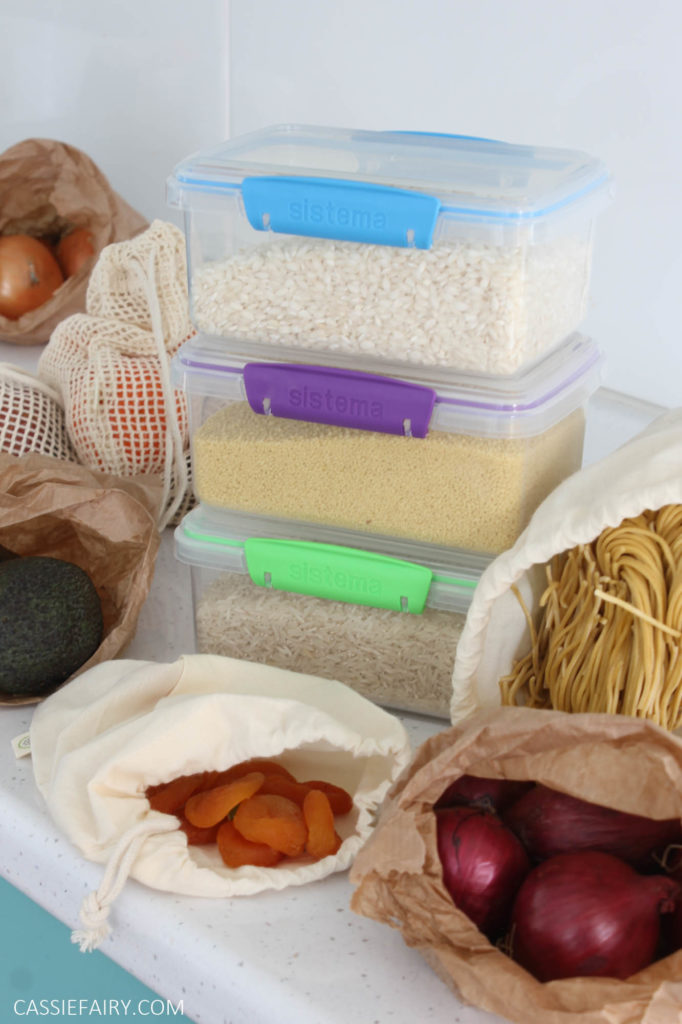
Thanks to the storage products I began using this month, I’ve managed to reduce the amount of single-use plastic in my kitchen. That’s because I’ve started doing my weekly shop in a slightly different way. Rather than heading to the supermarket to do a weekly shop, I decided to shop local instead.
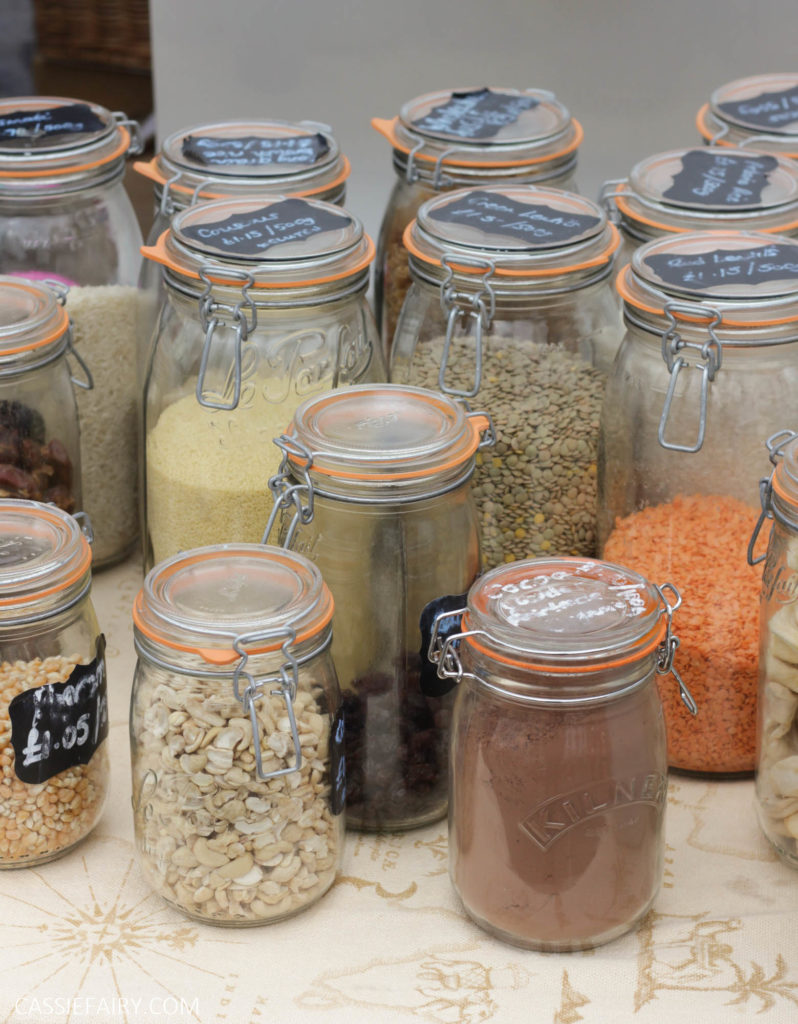
Firstly, I took my reusable Sistema tubs and organic cotton bags to Cupboard Love. This is a fantastic local company who sell packaging-free versions of almost everything I need for my weekly shop. You can find them online, at local markets or click and collect from pick-up points around the county.
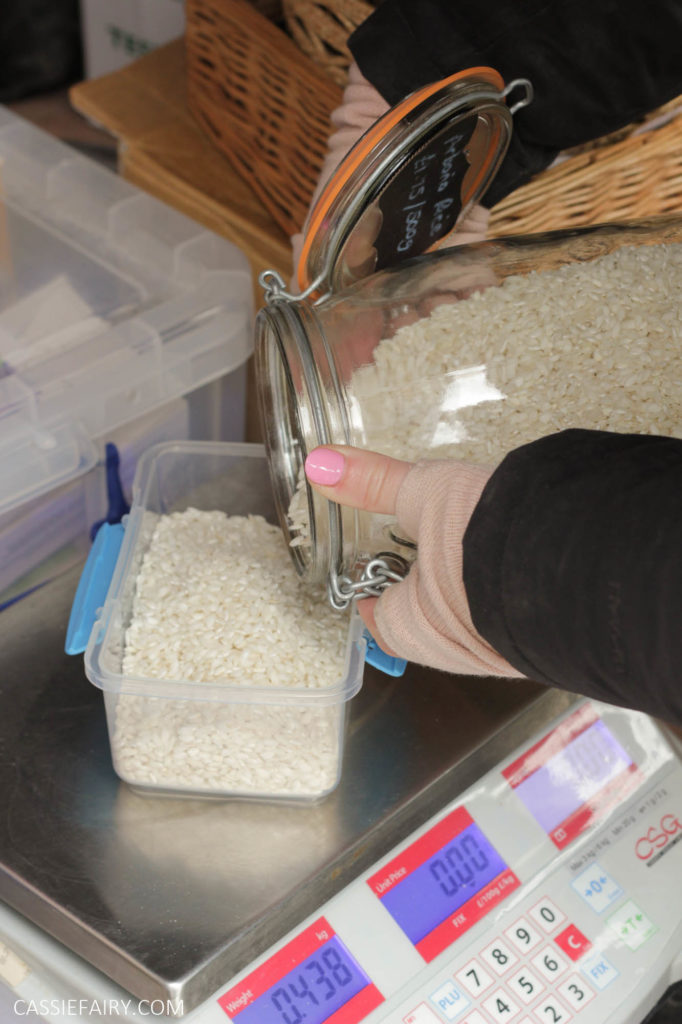
I went to Framlingham market on Tuesday to stock up on rice, noodles, couscous, risotto rice and dried apricots. I’d previously bought lentils, oats, sultanas, dried apples and bananas from Cupboard Love, which all adds up to lot less plastic packets in my cupboards this month.
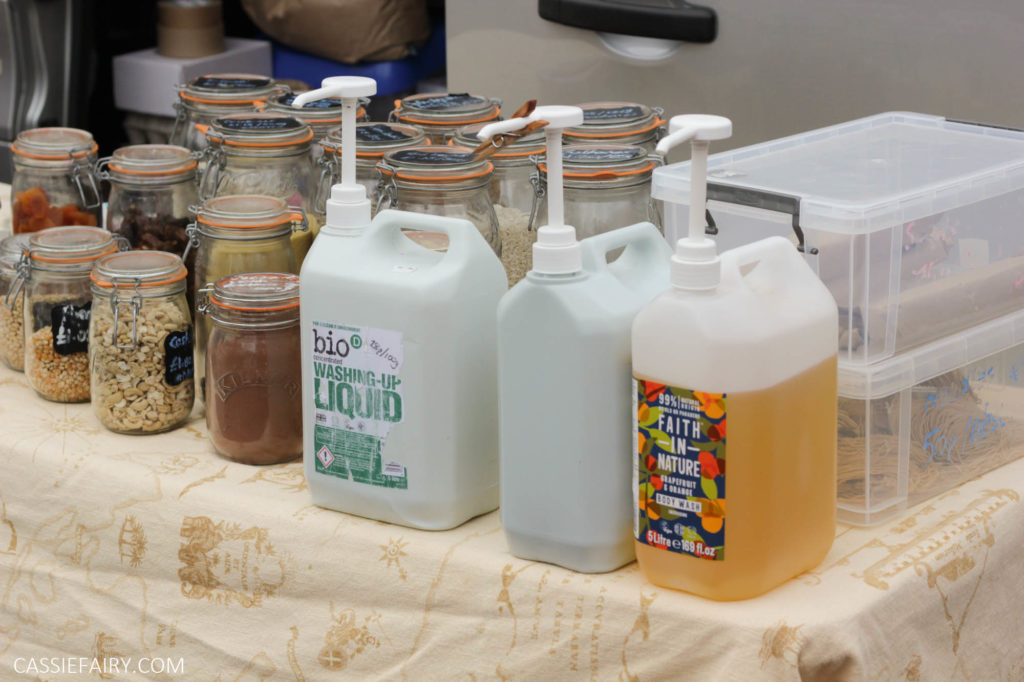
After filling my canvas bag with store-cupboard goods, I turned my attention to the fresh fruit and veg stall on the market. There I managed to get red and white onions, potatoes, mushrooms – even avocados – all of which were a much better price than buying the same veggies from the supermarket. I filled my cotton produce bags from A Slice of Green and everything else went into paper bags from the market stall.
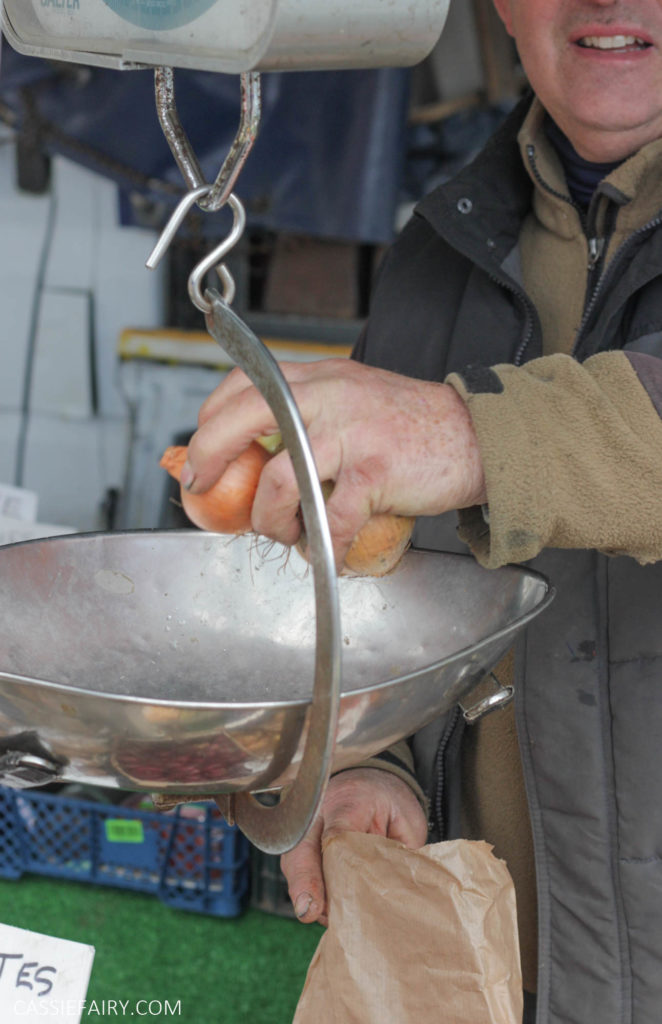
The fish van was next and my husband chose a real treat for our dinner that evening – a piece of hot smoked salmon. It smelled delicious but, to stop it filling our fridge with that smoked scent, I popped it into a glass container from OXO with a sealed plastic lid.
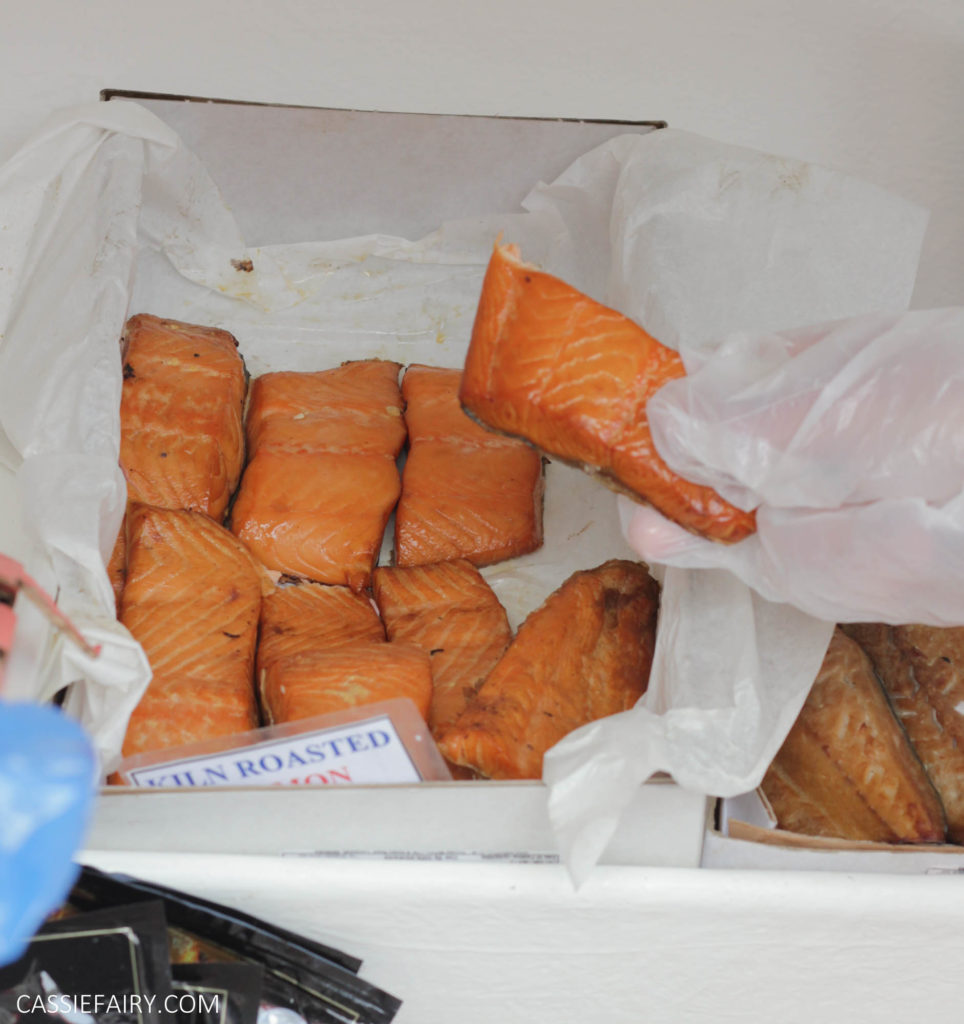
With my shopping completed, I realised just how much I had enjoyed shopping on the market. Going to the supermarket is one of my least favourite tasks and I avoid it as much as I can, whereas visiting the market was much more relaxed and felt like a bit of a treat – the kind of thing you would do on a day off, or when you’re on holiday. I liked being part of the community and shopping face-to-face with the stallholders was so much nicer than trawling the supermarket aisles. And paying in cash helped me to stick to my food budget too!
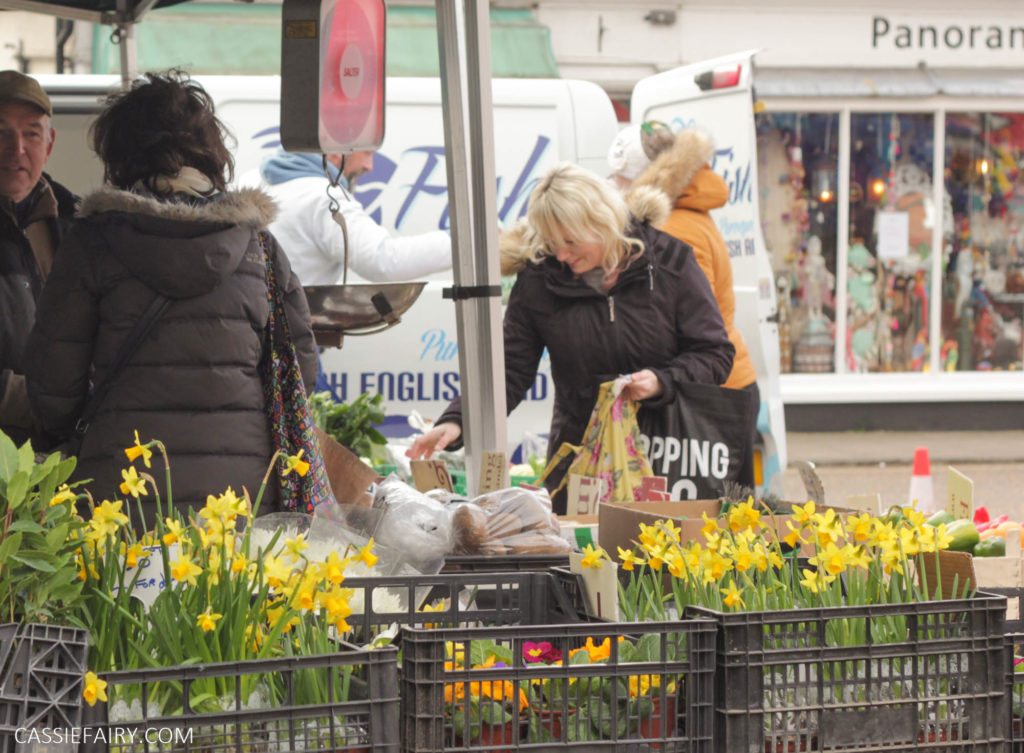
THE FINAL WEEK OF THE CHALLENGE
During this last week of the challenge, I’ve been keeping track of our food and plastic waste again so that I can compare the measurements with the first week. It was a marked improvement: on the Monday I only threw away one banana that had hidden in the bottom of the fruit bowl and was brown and soggy (oops!), on Tuesday, just one piece of cucumber ended up in the bin, and on Thursday a couple of slices of bread were wasted. Compared to the bowls of leftovers, piles of salad and baked goods that we threw away that first week, I think we’re doing much better.
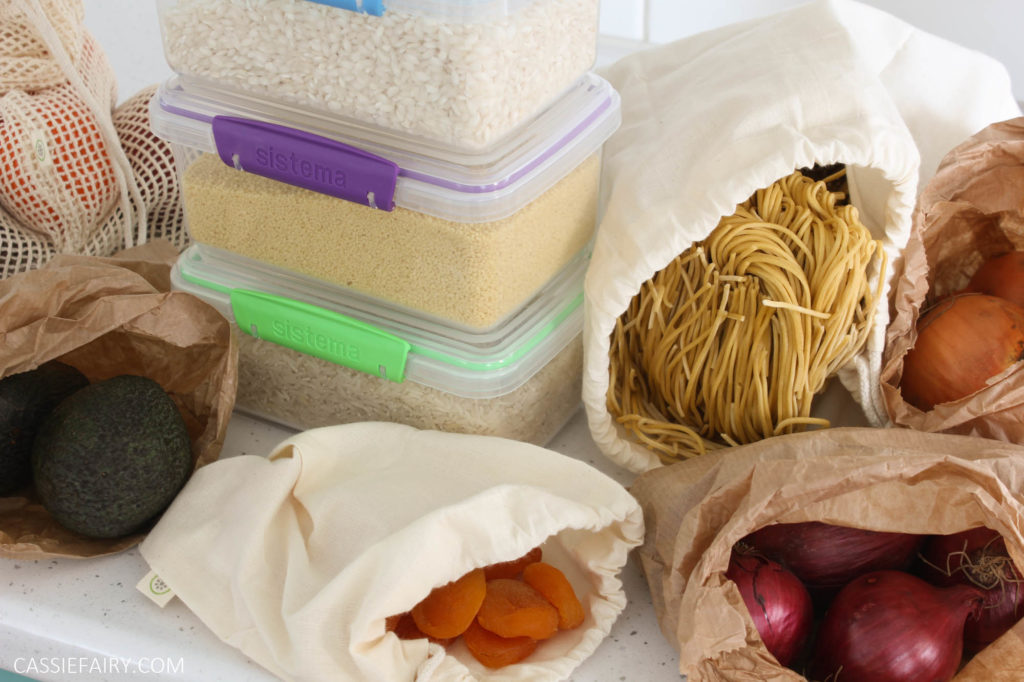
We ate out twice that week but, knowing that we wouldn’t be home, we adjusted our meal plan to accommodate this. So we didn’t buy more fresh ingredients that we needed and I made sure that the more delicate items were eaten first, and we relied on store-cupboard recipes toward the end of the week. I also made a huge batch of chilli in the pressure cooker and it was enough for eight portions, which we stored and reheated correctly. What a treat to enjoy leftovers and not have to cook a meal from scratch every night!
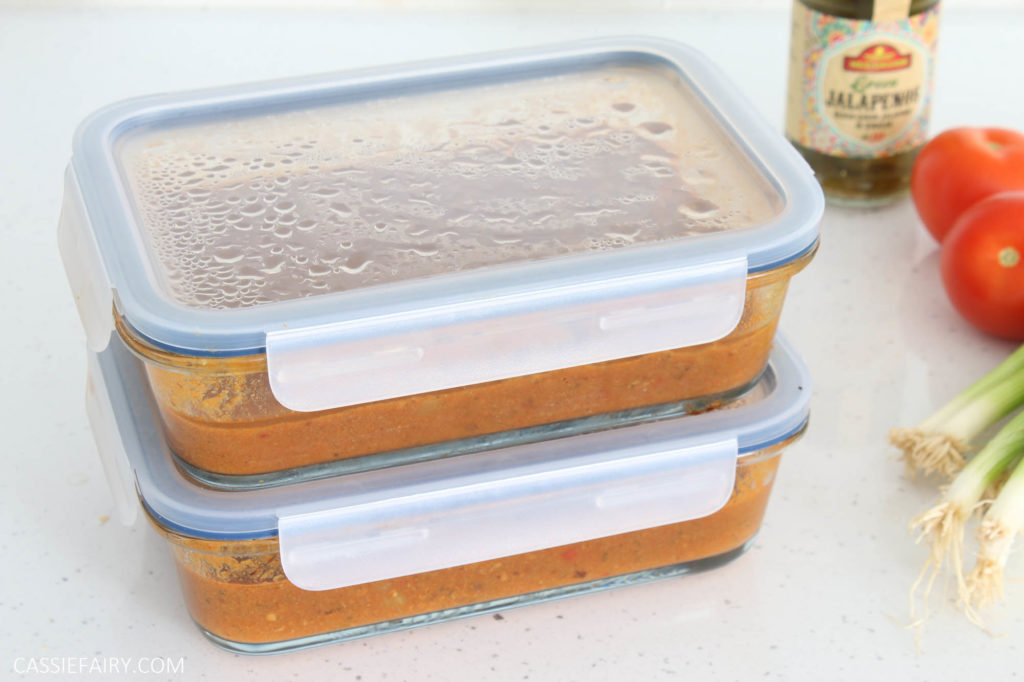
One very important thing I discovered during this month is that we already had the ingredients for EIGHTEEN main meals for 2 in our kitchen. And more than half of those meals would be 4-portion meals, so we would also have leftovers for lunch the next day. Why am I going food shopping every week?? I’m not even talking about frozen ready meals, as we don’t have anything but frozen fruit and veg and two pies in the freezer. It was actual ingredients to make multiple meals from scratch, such as a lasagnes, curries, chillis, pasta bakes, risottos and much more.
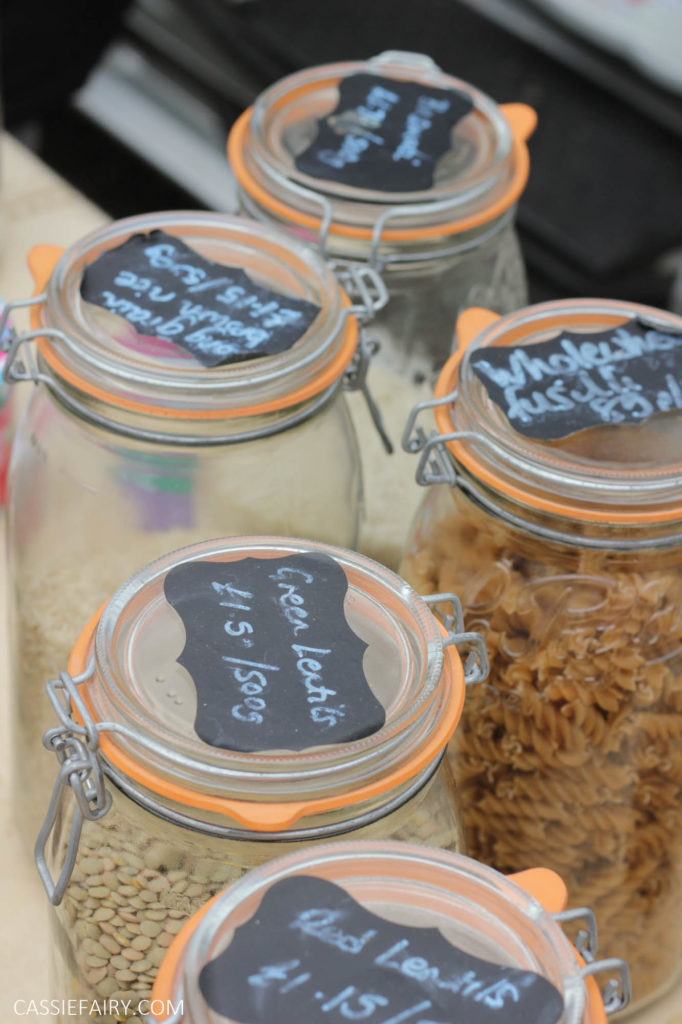
All I needed to pick up from the market was a few fresh items such as dairy and fresh veggies in order to complete the meals that we already had ingredients for. This more-than halved the amount of money that we usually spend on food shopping each week. Amazing, huh? So I highly recommend checking your cupboards, freezer and fridge and seeing what you’ve already got before you shop.
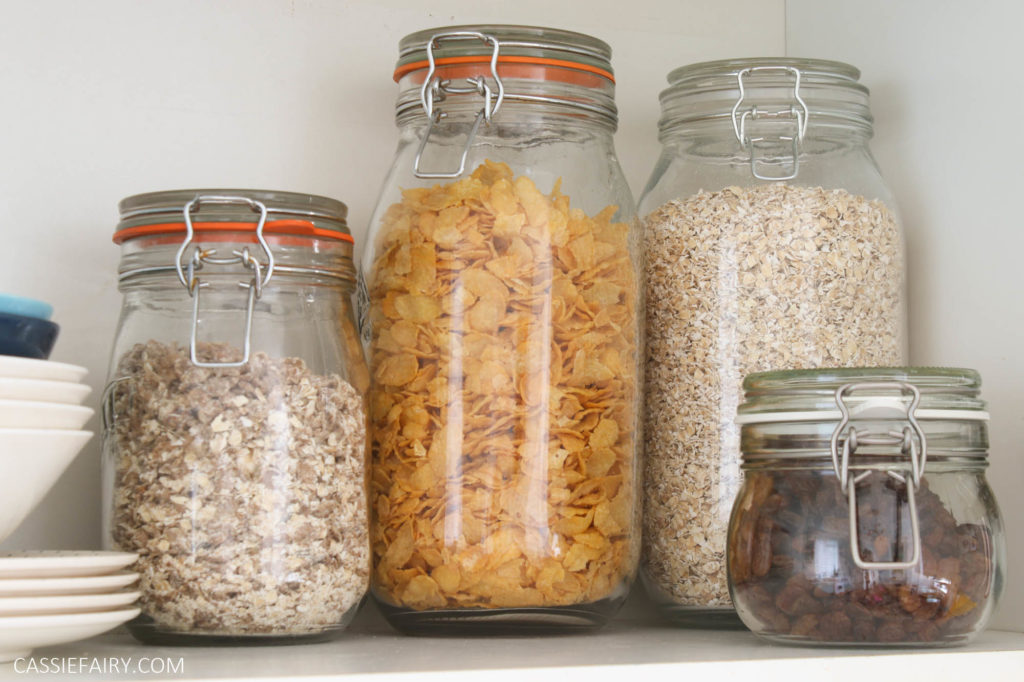
Could you benefit from taking the #FoodSavvy challenge too? If you want to cut costs, reduce waste and save time on cooking, it’s certainly worth investigating the FoodSavvy.org.uk website and using their quick tips to make some easy swaps. Let me know how you get on and please share your own hacks for using up leftovers in the comments below – all advice is gratefully received 🙂
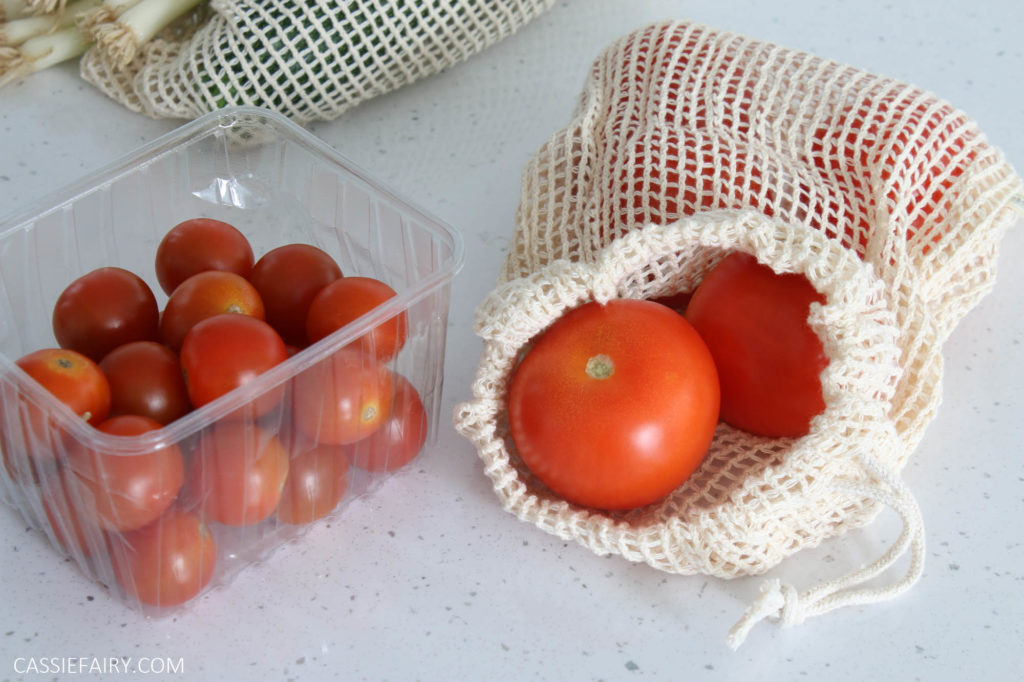
PIN IT FOR LATER
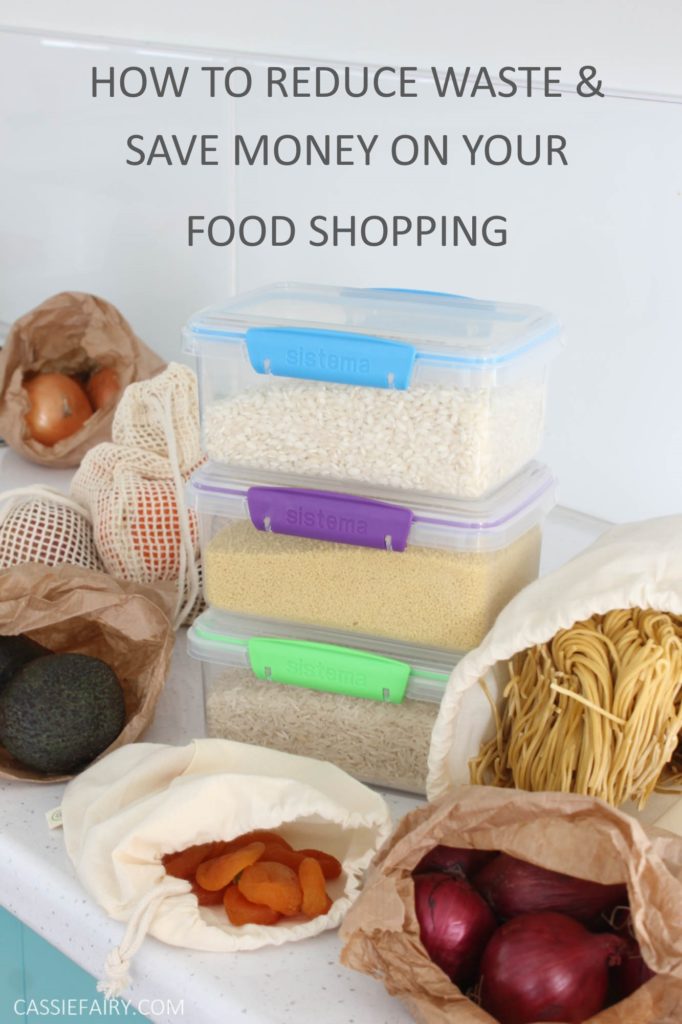
This article is a sponsored collaboration. The pink links in the content indicate a sponsored link or information source. The blog post reflects my own experience and the sponsor hasn’t had any control over my content 🙂



















